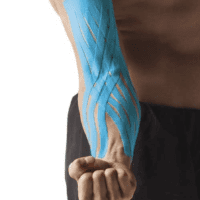What Causes Post-Exercise Muscular Pain?
What causes the dreaded “stiff and sore muscles” a day or two after pushing yourself during exercise?
This discomfort occurs due to the buildup of lactic and carbonic acids in your muscle tissue as you begin your workout. These acids are natural by-products of muscle contractions. They are formed during the metabolic process when muscles burn stored glycogen to produce energy.
The good news is that most of these acids eventually convert back into glycogen and are replenished for your next exercise session. However, until the acid levels in your muscles return to normal, you may experience pain and muscle fatigue.
How Does Exercise Change Your Muscles?
Regular exercise brings about several changes in your body, including increased blood vessels supplying the muscles with oxygen and nutrients. This improved circulation aids in the elimination of waste products and toxins that accumulate during exercise. However, this enhanced muscular circulation may take several weeks to develop.
Insufficient oxygen and nutrient supply during this period can result in a backup of toxic wastes, leading to soreness, pain, and stiffness. While many believe that aches and pains are inevitable consequences of exercising, this is often untrue.
How Does Massage Help Ease Post-Exercise Muscle Pain?
Massage is a highly effective method of alleviating the irritation caused by these acidic wastes. Research indicates that massage can significantly expedite muscle recovery compared to rest alone.
What about Muscle & Joint Stiffness?
Massage therapy can be beneficial for individuals dealing with soft tissue injuries like sprains and strains. By increasing circulation in the injured area, massage accelerates tissue repair, promotes healing, and reduces discomfort resulting from such injuries.
Massage is effective in reducing muscle and joint stiffness. Massage can enhance your overall performance by using specific massage strokes to reduce muscle tension and employing passive movements to stretch the connective tissue around joints. Additionally, it helps lengthen muscle and tendon units, serving as a preventive measure against injuries.
Massage is a Drug-Free Treatment
It’s essential to recognise that massage is a drugless therapy. It has effectively addressed various health issues such as headaches, insomnia, neck and back pain, digestive disorders (including constipation and spastic colon), arthritis, asthma, carpal tunnel syndrome, and muscular aches and pains. Instead of relying on medications, these conditions can respond positively to the healing power of massage therapy.
What are the Signs of Over-Exercising?
It’s crucial to balance adequately challenging your muscles and overloading them. Overdoing your workouts can lead to Delayed Onset Muscle Soreness (DOMS), milder than a muscle strain, tear, or rupture.
Please consult your physiotherapist for specific exercise load advice.
More info:
















































































